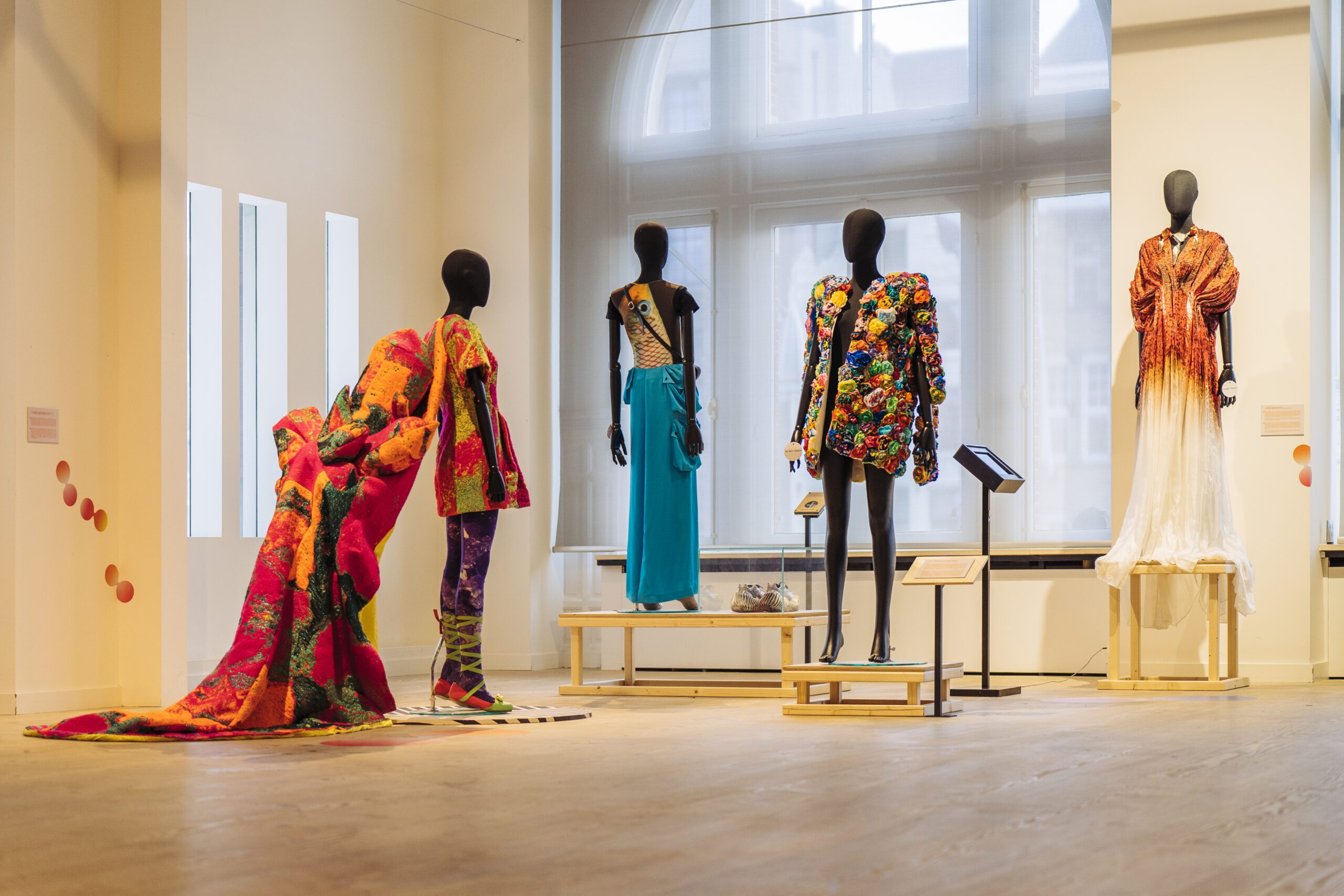Fashion for Good Museum shares its legacy and embarks on a new phase
Today, the Fashion for Good Museum publishes its legacy document. A testament to its transformative journey, the report was prompted by the museum’s closure on June 5th, 2024
CREDIT: Camilla Rama & Hyunji Kim
5 JUNE 2024
AMSTERDAM – Today, the Fashion for Good Museum publishes its legacy document. A testament to its transformative journey, the report was prompted by the museum’s closure on June 5th, 2024 – coinciding with World Environment Day – Fashion for Good however remains steadfast in its commitment to revolutionising the fashion industry and amplifying its efforts through its Innovation Platform. This announced Museum Legacy document represents the museum’s mission, summarising invaluable insights gathered over six impactful years and key results such as reaching 115.000 visitors and creating a dedicated community of more than 250.000 followers online. Committed to transparency and collaboration, Fashion for Good shares its reflections, tools, and transferable learnings, as well as the future of its collections and next steps, continuing to inspire positive change within the fashion ecosystem. All information can be accessed on the Fashion for Good website for continued use and benefit of educators, the cultural sector, and the wider public.
Looking back on its journey, the Fashion for Good Museum celebrates achievements such as hosting 115.000 visitors, including 8.000 students from 200 schools, curating 13 exhibitions, offering over 75 events, launching 4 educational programmes, reaching both current and future generations, and inspiring many to drive change in the fashion industry. With an earned media value of over 46 million Euros through press coverage since 2017, Fashion for Good’s influence has been significant, evident in its 250.000 social media followers and 15.000 newsletter subscribers.
Albert Brenninkmeijer, chairman of the board of the Fashion for Good Museum reflects: “In establishing the Fashion for Good museum, our aim was to create a space that transforms visitors’ perspectives on clothing, inspiring and educating them. We envisioned sparking a global movement towards a sustainable fashion industry. Reflecting on our journey, we take pride in our contribution to sparking conversations, driving change, and shaping the narrative around sustainable fashion. We aspire for our legacy to endure, motivating others to challenge the status quo for the betterment of our planet and future generations.”
This document stands as evidence of our commitment to transparency and collaboration, echoing the ethos that has driven Fashion for Good since its inception: changing the hearts and minds of its visitors and inspiring them to take action to change fashion. The report fulfils the promise we made in 2017 – to share our journey, learnings, and most impactful activities with the world. Within these pages, readers will discover reflections on our messaging, insights about creative partnerships with entities such as Lowlands Festival, Dutch Design Week, and Museumnacht to case studies of pioneering exhibitions. Our programming was created around themes and topics, such as the untold stories around cotton, circularity, and the future of biomaterials to educate and inspire visitors, ultimately empowering them to take action themselves.
“As we bid farewell to the museum, I am filled with pride in what we have achieved together in such a short period. From the humble beginnings of a pop up exhibition in 2017 to the establishment of a dynamic, interactive space in 2018, our museum has left an indelible mark on the landscape of sustainable fashion. Though our physical doors may close, the spirit of Fashion for Good lives on in the enduring legacy of this document, ensuring that our vision for a more sustainable and ethical industry continues to inspire and inform future generations,” said Katrin Ley, Managing Director of Fashion for Good.

Selection of looks of the What Goes Around Comes Around exhibition
Photographer: Elzo Bonam
Photographer: Elzo Bonam
Six key lessons
Reflecting on the diverse output of the museum during its short existence, as well as its significant footprint and wide reach, while acknowledging the challenges encountered during its establishment and development, we distilled six key lessons from Fashion for
Good’s unique sustainable museum practices:
- Recognition of Broader Shift: There is a wider movement towards sustainability in the museum sector, exemplified by Fashion for Good and the new ICOM definition.
- Storytelling for Societal Change: Cultural institutions are crucial in driving societal change in fashion consumption through storytelling.
- Innovation through Limitations: Embracing organisational limitations can stimulate innovation in museum collection management and education.
- Audience Engagement: Understanding and expanding the core audience is essential for effective engagement in sustainability initiatives.
- Measuring Impact: It’s challenging to measure impact for organisations with social missions, requiring clear success criteria.
- Establishing a Sustainability Framework: Defining sustainability within context is fundamental for organisational sustainability efforts.
Next phase
The museum building is entering a new phase, transitioning into a versatile space seamlessly integrating various functions, including events and co-working spaces. With this strategic evolution, Fashion for Good remains steadfast in its commitment to revolutionising the fashion industry and amplifying its efforts through the Innovation Platform. Earlier, Fashion for Good announced its renewed strategy aimed to facilitate widespread adoption and scaling of regenerative fashion innovations. This entails a significant dedication to enhancing the Innovation Platform and intensifying efforts in brand engagement, supplier integration, financing, and impact assessment. This transition underscores Fashion for Good’s commitment to fostering deeper collaboration among its community of sustainable fashion industry changemakers.
Other Articles

In conversation with Smartex: Explore Smartex’s AI-driven solutions transforming quality control and reducing waste
In this interview, we discuss the evolution of Smartex. Co-founder Gilberto Loureiro provides a deep dive into how Smartex tackles significant challenges in textile manufacturing using AI-driven technology and sustainable methods.

Fashion for Good and Textile Exchange Team Up to Trace Textile Waste
AMSTERDAM - Fashion for Good and Textile Exchange introduce the Tracing Textile Waste Project, a two-year, multi-stakeholder initiative aimed at harmonising data and system capabilities in the reverse supply chain. This project seeks to create alignment through an open-source data template and a glossary of terms. It will establish and validate a standardised framework for collecting and exchanging textile waste data between the point of origin and recyclers. A key objective is to deliver recommendations to Textile Exchange for the development of new and existing standards, including the Global Recycled Standard (GRS) and Recycled Claim Standard (RCS).

In Conversation with Living Ink: Turning Biomass Waste Into Value
The Fashion for Good team interviewed Living Ink's Director of Partnerships & Strategic Growth, Devon Murrie, to learn more about the innovator’s story, technology, challenges, and successes and showcase innovations that are driving tangible change in the industry and leading the path to scale.
